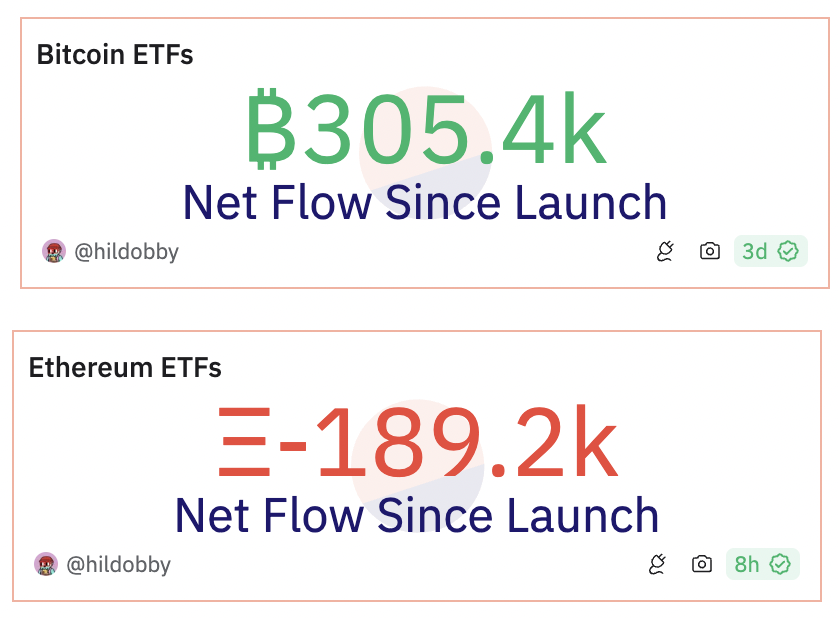There is a clear performance difference between Bitcoin and Ethereum ETFs based on recent data. Since their launch, Ethereum ETFs have experienced a net outflow of 189,200 ETH, while Bitcoin ETFs have experienced a sizable net inflow of 305,000 BTC, marking a massive contrast between the two assets.
With Ethereum still facing difficulties, Bitcoin has gained roughly $16.7 billion over Ethereum, indicating growing institutional interest in the former. The divergence in ETF flows points to a worrying pattern for Ethereum. It appears that institutions are losing interest in ETH, as many have sold their holdings covertly in recent months.
Ethereum’s market performance has been directly impacted by this ongoing dumping, as seen by a discernible decline in transaction volume. Although Ethereum’s blockchain has historically seen a lot of activity, its adoption and usefulness may be under pressure due to waning institutional confidence.

Ethereum’s switch to proof of stake (PoS) may be one factor contributing to this decline in interest. Although PoS was expected to improve scalability and efficiency, some institutional players do not seem to be convinced of its long-term advantages. Another factor contributing to investor reluctance may be the ecosystem’s complexity, which includes layer-2 solutions and frequent updates.
Conversely, more conservative and risk-averse institutional players may be drawn to Bitcoin due to its established status. Ethereum’s 189,000 ETH outflow illustrates the fact that in spite of the technological advancements that ETH provides, institutions still prefer Bitcoin as their asset of choice.
Ethereum needs to address these issues if it wants to rebuild market strength and institutional confidence, as indicated by the widening gap in net ETF flows. Ethereum may find it difficult to hold onto its position on the larger cryptocurrency market if the dumping of ETH persists and institutions continue to lean more toward BTC.







